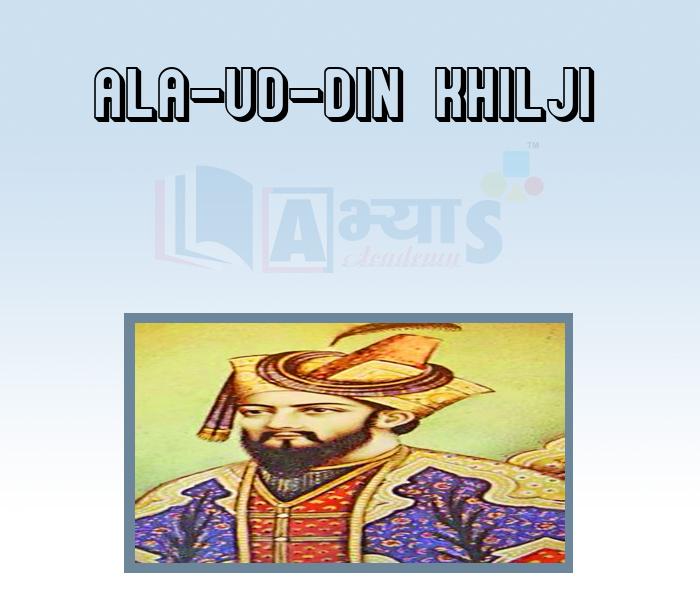Ala-ud-din Khilji

Ala-ud-din Khilji
Alauddin Khilji (1296-1316 AD)
Ala ud-din Khilji was the nephew and son in law of Jalal-ud-din.
Which of the following facts about Alaiddin Khilji's market control is not correct ? (I) Detailed information about Acts relating to market control comes from the historian Afif's descriptions. (II) The objective of strictness in land revenue collection was that farmers should sell food grains to the traders also sell at a cheaper rate (fixed rate) in the market. (III) Land tax was recovered from the Khalsa land of Doab as grain which was stored in the granary of the state (Act 3) (IV) An abvance loan of 20 lakh tanka was given Multan textile traders to buy and bring garments. | |||
| Right Option : B | |||
| View Explanation | |||
Ala-ud-din Khilji the second ruler of Khilji Dynasty ruled between _____________________. | |||
| Right Option : C | |||
| View Explanation | |||
In the Khiliji dynasty who assumed the title of "Yameen-ul-Khilafat Nasiri- Amir-ul Mumanin"(the Nayab of the Caliph). | |||
| Right Option : C | |||
| View Explanation | |||
Students / Parents Reviews [10]
My experience was very good with Abhyas academy. I am studying here from 6th class and I am satisfied by its results in my life. I improved a lot here ahead of school syllabus.

Ayan Ghosh
8thIt has a great methodology. Students here can get analysis to their test quickly.We can learn easily through PPTs and the testing methods are good. We know that where we have to practice

Barkha Arora
10thI have spent a wonderful time in Abhyas academy. It has made my reasoning more apt, English more stronger and Maths an interesting subject for me. It has given me a habbit of self studying

Yatharthi Sharma
10thBeing a parent, I saw my daughter improvement in her studies by seeing a good result in all day to day compititive exam TMO, NSO, IEO etc and as well as studies. I have got a fruitful result from my daughter.

Prisha Gupta
8thIt was good as the experience because as we had come here we had been improved in a such envirnment created here.Extra is taught which is beneficial for future.

Eshan Arora
8thAbhyas is a complete education Institute. Here extreme care is taken by teacher with the help of regular exam. Extra classes also conducted by the institute, if the student is weak.

Om Umang
10thA marvelous experience with Abhyas. I am glad to share that my ward has achieved more than enough at the Ambala ABHYAS centre. Years have passed on and more and more he has gained. May the centre flourish and develop day by day by the grace of God.

Archit Segal
7thOne of the best institutes to develope a child interest in studies.Provides SST and English knowledge also unlike other institutes. Teachers are co operative and friendly online tests andPPT develope practical knowledge also.

Aman Kumar Shrivastava
10thAbout Abhyas metholodology the teachers are very nice and hardworking toward students.The Centre Head Mrs Anu Sethi is also a brilliant teacher.Abhyas has taught me how to overcome problems and has always taken my doubts and suppoeted me.

Shreya Shrivastava
8thMy experience with Abhyas academy is very good. I did not think that my every subject coming here will be so strong. The main thing is that the online tests had made me learn here more things.









